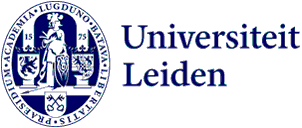News
-
 La Navidad: The Lost Beginnings 05 January 2015
La Navidad: The Lost Beginnings 05 January 2015One of the greatest mysteries of world archaeology is the exact location of La Navidad, the first settlement founded by Christopher Columbus on his first trip to the Americas in 1492. Known to be in the northern coast of the present day Haiti, it has been the object of study by many scholars, from various countries of the world, starting in the 1780s with French historian and geographer Moreau de Saint-Méry to explorer Barry Clifford, just recently. Other noteworthy investigators include Samuel Eliot Morison, a US historian and expert on Columbus (1930s); Dr. William Hodges and Clark Moore, amateur archaeologists living in the Limbe, Haiti areas (1960s – 2000s); Clark Moore and Dr. Kathleen Deagan, a US archaeologist from the University of Florida (1980s, 2003). It must be noted that archaeologist Irving Rouse also worked in the northern coast of Haiti, but focused more on the pre-contact settlements of the area. Links to their research can be found below.
-
Prof. Dr. Willem J. H. Willems (1950 – 2014) 17 December 2014
It is with great sadness that we announce the death of our dear colleague and principal investigator of the heritage project, Prof. dr. Willem J.H. Willems.
-
 Macroscopically Non-Destructive Sampling Of Greenstone And Jadeitite Artefacts To Investigate Trade Routes Used By Caribbean Communities 12 December 2014
Macroscopically Non-Destructive Sampling Of Greenstone And Jadeitite Artefacts To Investigate Trade Routes Used By Caribbean Communities 12 December 2014As part of ‘NEXUS 1492’, a European Research Council funded “Synergy” project we aim to assess the impact of Caribbean colonisation on the indigenous (material) culture. Inter-Islands exchange networks present before and after the arrival of Columbus form an important focus of research within NEXUS 1492. Studies of lithic artefacts such as tools and beads play a key role in this respect as they provide essential information of the entire process of collection of raw materials, production of the artefacts, use of the artefacts, and distribution and trade by the pre-colonial communities.
-
The Giving Month 05 December 2014
This week, on the 5th of December it is Sinterklaas in the Netherlands, which makes this an excellent opportunity to talk a little about what Sinterklaas, Christmas, birthdays and the first encounters in the Caribbean between indigenous people and Europeans have in common? The central importance of gift giving.
-
Introduction to “Hot Topics” 26 November 2014
Welcome to the first in a new series of blogs from the research team that is re-writing the history of both the New and Old World by looking at the impact of the colonial encounters between Amerindians, Africans and Europeans in the Caribbean. The Nexus 1492, CARIB-HERA and Island Networks projects have been underway for more than one year and we feel it is high time for us to reach out to you, our public on both sides of the Atlantic.
-
 A Site In The Mangroves – Anse Trabaud, Martinique 2015 25 March 2014
A Site In The Mangroves – Anse Trabaud, Martinique 2015 25 March 2014The site of Anse trabaud is located in Sainte Anne, in the south of the island of Martinique. The site is situated in, what is now, a mangrove area right near the coast and a salt pan. The site was discovered in 1976 by Henry Petitjean Roget and José Cruxent. Several researches studied the site and the area but it was not until 2001, when ceramics recovered from the site were studied, that an estimation of the period of habitation could be made. The ceramics were congruent with ceramics from the Troumassoid and the Suazoid series, estimated to date from AD 850 to 1450. The site itself is very interesting, especially because of the location of its occupation. The area is very arid, and due to its proximity to the coast as well as the salinity of the soil, fresh water resources were most likely scarce. The salinity of the soil would have made it difficult to practice agriculture on the site as well; overall little is known about how food was provided by communities living in the area.
-
 Beads, pendants, and a lot of grinding: experimental archaeology at El Flaco 25 March 2014
Beads, pendants, and a lot of grinding: experimental archaeology at El Flaco 25 March 2014Last summer we performed a lot of experimental archaeology in El Flaco. Why? Well, you may have heard that many ornaments are being found at the site. The goal of the experiments was to shed light on the techniques and toolkits used in their production. In this post, I explain a bit about my PhD research and how the experiments have an important role in it.
-
 Seminar: Arqueología, Antropología E Historia Del Primer Encuentro Colonial En Las Américas 25 March 2014
Seminar: Arqueología, Antropología E Historia Del Primer Encuentro Colonial En Las Américas 25 March 2014On 3 and 4 August, 2016, the Instituto Tecnologico de Santo Domingo (INTEC) hosted an archaeology seminar, titled: Arqueología, Antropología E Historia Del Primer Encuentro Colonial En Las Américas, at the INTEC library in the Dominican Republic.
-
 MOU Signing Between Leiden University And The National Archaeological Museum Aruba. 25 March 2014
MOU Signing Between Leiden University And The National Archaeological Museum Aruba. 25 March 2014On Tuesday the 25th of November Professor Corinne Hofman of Leiden University and the Minister of culture Sr. Otmar Oduber signed an MOU agreeing scientific and cultural cooperation as part of the ‘NEXUS 1492 ‘ project.
